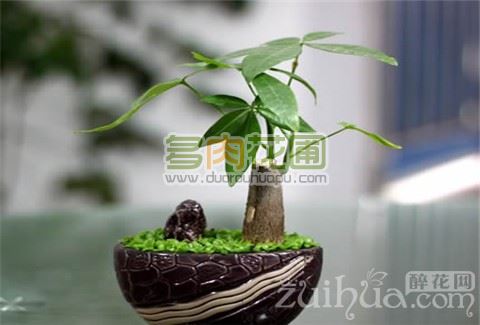Physiological diseases of rich trees
The diseases caused by mismanagement of rich trees are called physiological diseases, which mainly include freezing injury, weak growth and so on.
Frost damage
The lowest temperature of the rich tree overwintering is 8 ℃. If the temperature is lower than 8 ℃, it is easy to cause frost injury. The rich tree is easy to lose its leaves after freezing, and the whole tree dies when it is serious.
The branches are thin and the books become longer.
This is mainly due to lack of light or too small spacing between plants and rows. The rich tree has a wide range of adaptation to light, but it is not suitable to live in an environment where the light is too weak for a long time. For the plants with the above symptoms, cut short the unsightly branches, move the plants to a position with sufficient scattered light, and maintain a more appropriate density. It should be noted that do not move the "long deficiency" plants directly to the direct sunlight to avoid sunburn.
Symptoms and control methods of retting root and leaf spot in rich trees
Etiology: physiological diseases caused by improper management of fertilizer and water. Symptoms: the disease causes many large disease spots, affecting ornamental and growth. The disease spots as thin as paper appear on many leaves, showing irregular shape, and the boundary of the healthy part is not obvious. The leaves are a little faded and dull. The root system was wet-rotten and brown.
Characteristics of the disease: the roots of rich trees are underdeveloped, and the trees with poorly developed roots often show symptoms of lack of water, while excessive watering in the process of maintenance, and then encounter continuous rainy days or low temperature (less than 16 ℃), often cause root rot. Control method: the disease is controlled by cultivation techniques. Trees with healthy roots should be selected when buying; fertilizer and water management should be done according to the weather and temperature, and the water content of the substrate is about 60% (that is, grasp the matrix by hand and spread out after letting go). Fertilizer should be applied once in half a month in the peak growing season, and appropriate amount of phosphorus and potassium fertilizer should be applied; foliar fertilizer should be sprayed to maintain the root system when the root system is rotten at the beginning of the season; and sufficient light should be given in winter.
Related topics: prevention and control of retting root and leaf spot of Daquan rich tree (Malaba chestnut)
The disease is a physiological disease caused by improper management of fertilizer and water. The rich trees with underdeveloped roots often show symptoms of lack of water, while excessive watering in the maintenance process and continuous rainy days or low temperatures (less than 16 ℃) often lead to root rot.
The disease causes many major disease spots, affecting ornamental and growth. The disease spots as thin as paper appear on many leaves, showing irregular shape, and the boundary of the healthy part is not obvious. The leaves are a little faded and dull. The root system was wet-rotten and brown.
Prevention and control methods: no better control method has been found for the time being, so it is suggested to strengthen the prevention of the disease.
The main results are as follows: (1) trees with healthy roots should be selected when buying.
(2) Fertilizer and water management should be done according to the weather and temperature. The water content of the matrix is about 60% (that is, grasp the matrix by hand and spread out after letting go). Fertilizer should be applied once in half a month in the peak growing season, and appropriate amount of phosphorus and potassium fertilizer should be applied.
(3) the root system should be maintained by spraying foliar fertilizer when the root system is rotten at the beginning.
(4) sufficient light in winter.
- Prev

What are the skills of the rich tree in pest control?
The common diseases of rich trees are root rot and leaf blight. The incidence of root rot mostly starts from the root or rhizome, spreads upward, the phloem soft rot becomes flooded, and the xylem changes color. It is generally because the environment is damp and easy to cause root rot. The key to prevention and control is to create suitable environmental conditions for it and keep it dry and clean. After the attack
- Next

How to control common diseases and insect pests of Magnolia
Common diseases of Cymbidium and their control methods: 1. Soft rot: also known as rot disease, wiping head disease and so on. Most of them occur on the lower leaves, and at the beginning, the disease spots show dark green water stains, and then the disease spots spread into pieces, and the diseased leaves rot and become soft and droop, spreading to the root system, resulting in the lodging of the whole plant and the shedding of the heart leaves.
Related
- Fuxing push coffee new agricultural production and marketing class: lack of small-scale processing plants
- Jujube rice field leisure farm deep ploughing Yilan for five years to create a space for organic food and play
- Nongyu Farm-A trial of organic papaya for brave women with advanced technology
- Four points for attention in the prevention and control of diseases and insect pests of edible fungi
- How to add nutrient solution to Edible Fungi
- Is there any good way to control edible fungus mites?
- Open Inoculation Technology of Edible Fungi
- Is there any clever way to use fertilizer for edible fungus in winter?
- What agents are used to kill the pathogens of edible fungi in the mushroom shed?
- Rapid drying of Edible Fungi

